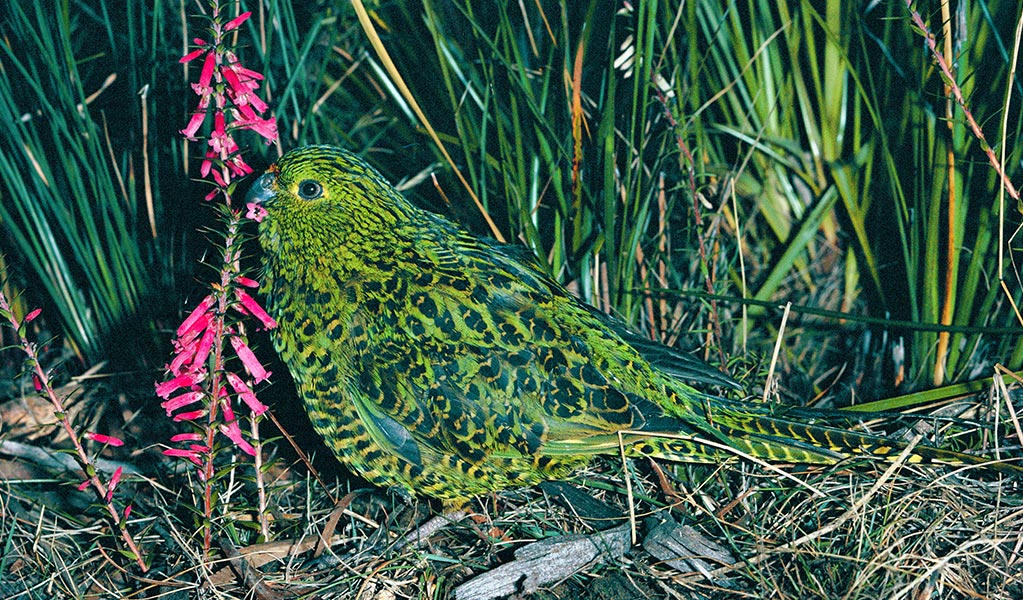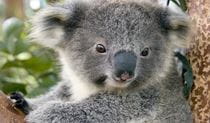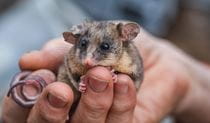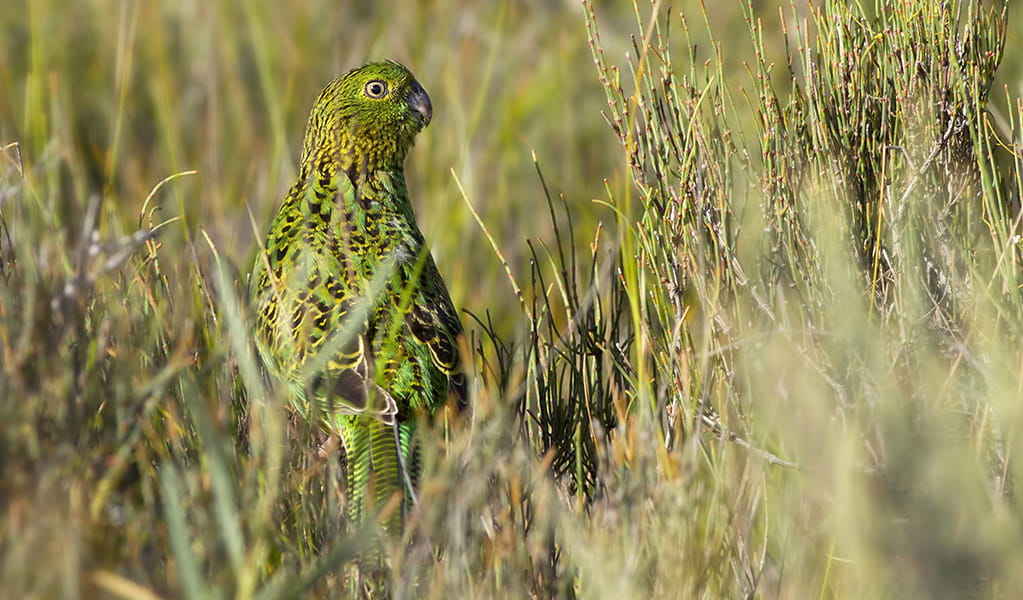Eastern ground parrot
The eastern ground parrot is a beautiful, ground-dwelling native bird that lives in low heathland habitat along the NSW North and South coasts and escarpments. It’s listed as a vulnerable species in NSW.
Closely related to the recently rediscovered night parrot, eastern ground parrots are endemic to isolated pockets of coastal heathland from southern Queensland to the far western Victorian coast.
One of 3 subspecies of ground parrot, the NSW eastern ground parrot population is estimated at around 10,000 birds. The other 2 subspecies occur in Western Australia and Tasmania, suggesting ground parrots once had a much larger range. In fact, the NSW subspecies used to occur as far west as Adelaide.
A tricky bird to study
The cryptic nature of these birds, and grass-green colouring that helps them blend into their dense habitat, makes them challenging to spot or study. Researchers can only estimate local ground parrot populations by listening for their distinctive calls at dawn and dusk: a series of very high-pitched whistles, rising in steps with each note higher than the one before.
The invention of small, remote-listening song meter devices provide a powerful new tool for eavesdropping on ground parrots across more of their range, saving human field ecologists time and effort.

Listen to an eastern ground parrot's call
Audio © David Stewart Naturesound
Ground-level living
Eastern ground parrots spend most of their time living on or near the ground, preferring to run along the ground than fly. They favour high rainfall coastal heathland and sedgelands with very dense, often prickly, foliage cover from 0.5m to 2m high.
These habitats offer plenty of roosting, nesting and foraging opportunities. Ground parrots feed on seeds from a huge range of plants. A single bird can eat around 8,000 seeds a day from as many as 60 different types of plants.
But while dense, low coastal heathlands are ideal for hiding from predators and feeding on abundant seeds, they have a major drawback – they’re highly flammable.
You would think that living at ground level makes this species more vulnerable to fire than birds that spend their time flying. Yet, they seem to be able to escape fires, usually returning to their post-fire habitat within 6-12 months. Where they take refuge in between the fire and their return is one of the great mysteries surrounding ground parrot ecology.
Animal facts
- Common name
- Eastern ground parrot
- Scientific name
- Pezoporus wallicus wallicus
- Conservation status in NSW
- Vulnerable
Under threat
Today, the NSW eastern ground parrot population is confined to protected pockets of their heath and grassland habitat. This ranges from Bundjalung and Yuraygir national parks on the North Coast down to Beowa National Park and Nadgee Nature Reserve on the Far South Coast.. There are also a handful of national parks in between, including Limeburners Creek Nature Reserve, plus Jervis Bay and Morton national parks.. Most of these parks have long-term monitoring programs for ground parrots, which have found stable local population trends, despite recent severe wildfire events.
Historically, ground parrots have suffered widespread habitat loss since European colonisation. In our changing climate, more frequent and more extreme fires are a growing threat. Regular, widespread, fierce fire events can prevent habitat from recovering, leaving surviving ground parrots with a severe lack of food and nesting resources, and no protective cover from predators. Low-lying heathland in coastal reserves are also at risk of inundation or erosion from sea level rise.
Ground parrots can re-colonise burnt habitat after 1-2 years, and can maintain healthy densities in habitat that hasn’t been burnt for 40 years.. As there’s no evidence this species migrates or regularly disperses long-distance, once ground parrots disappear from an area they’re unlikely to return.
You might also like
-

Saving our Species conservation program
Today, we're at risk of losing nearly 1000 of our state's native animals and plants. That's why the NSW Government established Saving our Species. It'...
-

Protecting threatened species in parks
Around 84% of the approximately 900 threatened species in NSW are found in our national parks and reserves. Find out what we're doing to protect threa...

